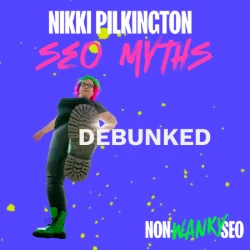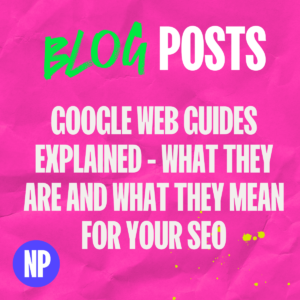Often when I audit a website, I encounter this bizarre belief that every single internal link should open in a new tab. It would seem that common thought is we need to take over our visitors’ browser completely, as if we’re scared that they’ll leave and never come back.
It’s nonsense. Complete and utter nonsense.
Your internal links aren’t some kind of visitor retention strategy. They’re navigation tools. When you force every link to spawn a new tab, you’re not being clever – you’re being annoying.

Users know how to use the back button
I mean, it should be obvious, but people who browse the internet have figured out how to click the back button if they want to return to a previous page. They’ve been doing it since the 1990s. They’re quite good at it now.
Making every link open in a new tab because you’re worried people might leave is patronising, it’s unnecessary, and it creates a worse experience for everyone.

Browser tab chaos drives people away
Imagine that someone visits your site and clicks through three pages to find what they need. If every internal link opens a new tab, they’re now managing four tabs of your website. Click through a few more pages? Now they’re drowning in tabs, all from the same site.
People don’t stick around trying to remember which tab has what. They close the lot and bugger off somewhere less frustrating.
On a mobile device, managing multiple tabs is even more awkward. Users can’t see all their tabs at once like they can on desktop. Each new tab adds another layer of navigation confusion.
When someone’s trying to compare your products or services across different pages, forcing them to hunt through tabs makes the experience needlessly complicated. They might just give up and go elsewhere.

Breaking the fundamental way websites work
Web navigation has worked the same way for decades. You click a link, it takes you to the new page. If you want to go back, you hit the back button. If you want to open something in a new tab, you right-click or use the scroll wheel on your mouse (yes, I know there are other ways, but honestly I can’t be arsed finding out what they are on every device – you’ll know how to do it on yours, I’m sure).
When you override this behaviour, you’re fighting against years of learned user behaviour. People expect websites to work in certain ways. Breaking those expectations doesn’t make your site special – it makes it awkward.

What keeps people on your site without tricking them?
Keeping visitors on your website isn’t rocket science. Create content they actually want to read. Build clear navigation that helps them find what they need. Make your site genuinely useful.
You can’t trap people into staying by making your website difficult to navigate away from. That’s like a shop owner standing in the doorway so customers can’t leave. It doesn’t work, and quite frankly it’s weird and reminds me of Carnaby Street back in the 90s (just me stuck in that weird leather jacket shop with the guy who always tried to stop you from leaving if you’d not bought anything?).

When new tabs make sense
There are legitimate times to open links in new tabs. External links to other websites? Fine. PDFs or downloads? Makes sense. Tools or applications that users need to reference while staying on your page? Yup, go right ahead.
But your internal navigation? Your blog posts? Your product pages? Let users control their own browsing experience.

The engagement metrics tell the truth
Every time I’ve seen a site switch from forcing new tabs to normal internal linking, the engagement metrics improve. Time on site goes up because people can actually navigate properly. Bounce rate drops because users aren’t frustrated and closing everything.
Pages per session increases when people can easily move through your site without tab management becoming a job. The data consistently shows that respecting how people expect websites to work leads to better results.
Your visitors aren’t idiots who need to be tricked into staying on your website. They’re there because they want something you offer. Help them find it easily, and they’ll stay as long as they need to.
The obsession with forcing new tabs comes from a place of insecurity. “What if they leave and never come back?” Well, if your content isn’t good enough to bring them back, no amount of tab manipulation will fix that.





